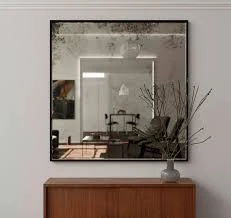

Float glass, a common type of flat glass, is produced using the float glass process, invented by Sir Alastair Pilkington in the 1950s. This innovative method revolutionized glass manufacturing, leading to improved quality and efficiency. Float glass is characterized by its uniform thickness and smooth surface, making it widely used in construction, automotive, and various industrial applications.
There are several types of float glass available, each catering to specific needs. The most basic type is clear float glass, which is transparent and has excellent optical clarity. It is often used in windows, doors, and facades due to its aesthetic appeal and ability to allow natural light to enter a space. However, clear glass can be prone to heat gain and glare, prompting the development of specialized variations.
One such variation is low-emissivity (low-E) glass, which features a thin metallic coating that reflects infrared energy while allowing visible light to pass through. This type of glass is ideal for energy-efficient buildings, as it helps to minimize heat loss in winter and reduce heat gain in summer. Consequently, the use of low-E glass contributes to lower energy bills and a reduced carbon footprint.
Another significant type of float glass is tinted float glass. This glass is treated with metal oxides or colored additives, resulting in various shades that reduce glare and enhance privacy. Tinted glass is popularly used in commercial buildings and automotive applications, providing both functional and aesthetic benefits by improving occupant comfort and reducing reliance on artificial lighting.

For applications requiring enhanced safety and security, laminated float glass is the preferred choice. This type of glass consists of two or more layers of float glass bonded together with a plastic interlayer. The laminated structure not only prevents shattering upon impact but also offers acoustic insulation, making it suitable for high-traffic areas and locations prone to severe weather conditions.
In addition to these, specialized float glass types include coated and patterned variations
. Coated float glass can feature reflective or decorative coatings for specific design requirements, while patterned glass adds texture and privacy without compromising visibility.In summary, the variety of float glass types available today demonstrates its versatility and significance across numerous industries. Whether for aesthetic appeal, energy efficiency, safety, or functionality, float glass continues to play a crucial role in modern architecture and design, making it an essential material in various applications. As technology advances, we can expect to see even more innovative developments in the realm of float glass.